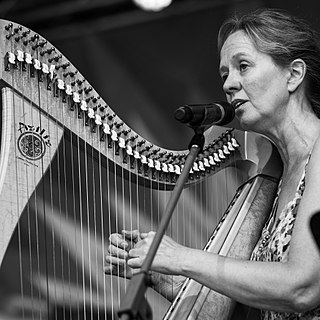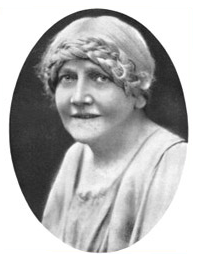Related Research Articles

Scotland is internationally known for its traditional music, which remained vibrant throughout the 20th century and into the 21st, when many traditional forms worldwide lost popularity to pop music. In spite of emigration and a well-developed connection to music imported from the rest of Europe and the United States, the music of Scotland has kept many of its traditional aspects; indeed, it has itself influenced many forms of music.
Martyn Bennett was a Canadian-Scottish musician who was influential in the evolution of modern Celtic fusion, a blending of traditional Celtic and modern music. He was a piper, violinist, composer and producer. He was an innovator and his compositions crossed musical and cultural divides. Sporting dreadlocks at the height of his performing career, his energetic displays led to descriptions such as "the techno piper". Diagnosis of serious illness at the age of thirty curtailed his live performances, although he completed a further two albums in the studio. He died fifteen months after release of his fifth album Grit.
Pibroch, piobaireachd or ceòl mòr is an art music genre associated primarily with the Scottish Highlands that is characterised by extended compositions with a melodic theme and elaborate formal variations. Strictly meaning "piping" in Scottish Gaelic, piobaireachd has for some four centuries been music of the Great Highland Bagpipe. Music of a similar nature, pre-dating the adoption of the Highland pipes, has historically been played on the wire-strung Gaelic harp and later on the Scottish fiddle, and this form is undergoing a revival.

The Celtic harp is a triangular frame harp traditional to the Celtic nations of northwest Europe. It is known as cláirseach in Irish, clàrsach in Scottish Gaelic, telenn in Breton and telyn in Welsh. In Ireland and Scotland, it was a wire-strung instrument requiring great skill and long practice to play, and was associated with the Gaelic ruling class. It appears on Irish coins, the coat of arms of the Republic of Ireland, Montserrat, Canada as well as the flag of Montserrat.
Sarah Frances Beamish is a British composer and violist. Her works include chamber, vocal, choral and orchestral music. She has also worked in the field of music, theatre, film and television, as well as composing for children and for her local community.

St Mary's Music School is a music school in Scotland in the West End of Edinburgh, for boys and girls aged 9 to 19 and is also the Choir School of St Mary's Episcopal Cathedral. The school, which is non-denominational, provides education for children with a special talent in music, and is Scotland's only full-time independent specialist music school. In 2017 the school has 80 pupils from many different backgrounds and from all parts of Scotland, the rest of the UK and abroad – 49 day pupils and 31 boarders, plus one student on the school's Part-time Pathways to Specialism scheme.

Patsy Seddon is a Scottish harpist, violinist and traditional singer in Scots and Gaelic.
Mary Macmaster is a Scottish harpist and singer. She performs on the clàrsach and the Camac electroharp, and she sings in English and Gaelic. She has worked with Sting, Kathryn Tickell, Norma Waterson, Donald Hay, the Poozies, and in the duo Sìleas with Patsy Seddon. In 2013, she and Seddon were inducted into the Scottish Traditional Music Hall of Fame.
Lucile Lawrence was a leader among American harpists. At the end of her life, she was actively teaching as a faculty member of Boston University and the Manhattan School of Music as well as teaching privately.

Rachel Hair is a folk harpist from Scotland. She plays the Celtic harp, also known by the Scottish Gaelic word clarsach.

Mary Ann Kennedy, is a Scottish musician, singer, choral director, composer, radio and television presenter, and music producer.
Kate Targett-Adams is a singer, songwriter, MC and Celtic harpist. She has released 6 albums and has enjoyed most success singing in Chinese across Asia.

Music schools in Scotland are available at several levels. Formal music education begins at 4½ years and can progress as high as postgraduate studies. Education in Scotland is a responsibility of the Scottish Government. Music is regarded as being an integral part of the culture of Scotland.

Marjory Kennedy-Fraser was a Scottish singer, composer and music teacher and supporter of women's suffrage and pacifism. According to Ray Perman, Kennedy-Fraser "made a career of collecting Gaelic songs in the Hebrides and singing her own Anglicized versions of them."

Alison Kinnaird MBE, MA, FGE is a glass sculptor, Celtic musician, teacher and writer born in Edinburgh, Scotland. She is one of the foremost and most original modern glass engravers in Scotland.
Roddy MacLeod, MBE is a Scottish bagpiper, director of the annual Piping Live! Festival and principal of the National Piping Centre.
Helen MacLeod was a Scottish harp player.
Roderick Morison, known as An Clàrsair Dall, was a Scottish Gaelic poet and harpist. He was born around 1646 in Bragar, Lewis and educated in Inverness, but he also learned to play the clàrsach as a profession. Later on, he moved to the Isle of Skye where he died around 1713. Morison is best known for his songs of praise for Gaelic aristocrats, for example MacLeod of Dunvegan and Iain Breac, MacLeod of Lewis.
Maeve Gilchrist is a Scottish harpist and composer currently living in New York City. She is known for combining traditional folk music, jazz, improvisation, and experimentation.
The Edinburgh International Harp Festival is an annual harp festival held in Edinburgh, Scotland that includes concerts, workshops, and courses, as well as one of the world's largest exhibitions of harp-makers. Organized and promoted by The Clarsach Society, two staff members, and a team of volunteers, the festival is held in April of each year and attracts more than 500 harpists from more than 25 countries.
References
- ↑ "Queen's Birthday Honours: The Edinburgh and Lothians list in full". The Scotsman. 9 October 2020. Retrieved 19 September 2021.
- 1 2 "Isobel Mieras". Scottish Traditional Music Hall of Fame. Retrieved 19 September 2021.
- ↑ "Music: Plucked from history '" the spectacular revival of the clarsach". The Scotsman. 22 May 2017. Retrieved 3 February 2022.
- ↑ "Festival Team". Edinburgh International Harp Festival. Retrieved 3 February 2022.